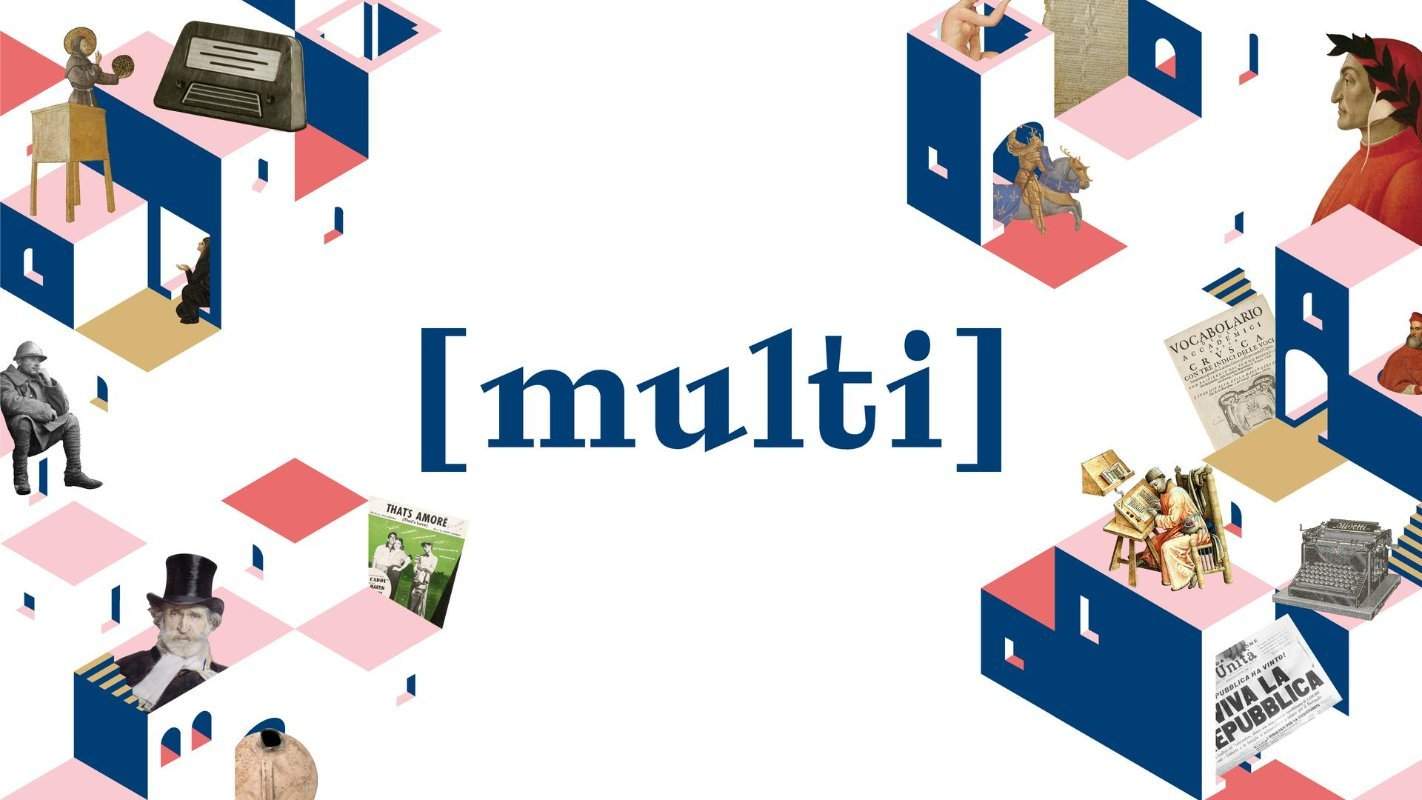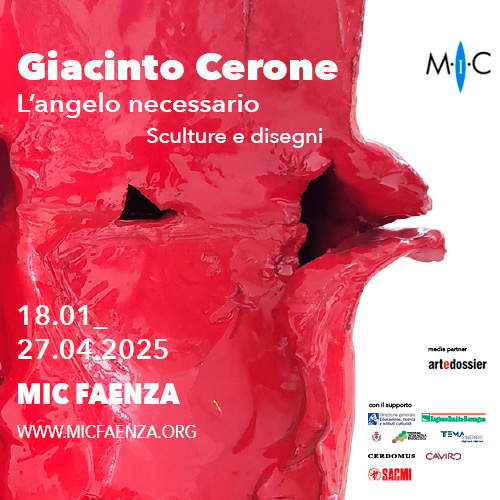Multimedia Museum of the Italian Language, the first virtual museum on Italian, is born
How did the Italian language come into being? Who established the rules of Italian? How did written Italian circulate? These are some of the questions through which the Multi - Multimedia Museum of the Italian Language, the first virtual museum dedicated to telling the story of Italian and its history, unfolds in Pavia.
Conceived and curated by a research group coordinated by the University of Pavia and including the Universities of Naples L’Orientale and the University of Tuscia, whose digital project was carried out by the multidisciplinary design studio Dotdotdot of Milan, the Multi is a multimedia itinerary with very high resolution visual exhibits, animations, and interactive games. The museum was realized thanks to a project funded by the Ministry of University and Research under the FISR 2019 (Special Supplementary Fund for Research), was previewed at the University of Pavia as part of the conference The Museum of the Italian Language. The Many Faces of an Idea and will be freely available for everyone to visit online starting June 1, 2023.
The presentation of the Multi is accompanied by the release of Towards the Multimedia Museum of the Italian Language. Reflections, experiences, languages (il Mulino), a volume edited by Giuseppe Antonelli (national coordinator of the research) with Giacomo Micheletti and Stella Poli, in which are collected reflections and suggestions related to the idea of digital museum and to some international experiences of language museums.
Structured as an unprecedented platform for knowledge and research, the Multi is designed to preserve, hand down and enhance the intangible cultural heritage constituted by the Italian language and its many facets, making it emerge as a “living thing,” an instrument of expression and growth of society. With an intuitive interface and an easily navigable structure, the Multi appeals to a wide and heterogeneous audience. Its digital paths combine narrative languages, images, video and audio to reconcile the scientific rigor of reconstruction with an immersive and surprising experience. The Museum is inclusive, interactive and free of charge: all texts are also available in audio format and, thanks to the English-language version, which will be completed in the coming weeks, it also appeals to an international audience.
The structure of the Multi unfolds through an introductory atrium and six interactive and intuitive thematic paths that answer as many foundational questions about our language: How did the Italian language come into being? Who established the rules of Italian? How did written Italian circulate? How did spoken Italian spread? How does Italian sound to those who do not know Italian? What languages are spoken in Italy? How has the Italian language spread around the world? The platform created by the Dotdotdot studio is easily navigable by a wide audience and aims to bring them closer to Italian through a selection of artifacts chosen from among the most representative of its history, including recent history. From the autographs of Dante and Petrarch, to the memoir written in her own hand in the 16th century by a woman accused of witchcraft; from the high-definition version of the first edition of the Vocabolario della Crusca to Nel blu, dipinto di blu by Modugno and Migliacci or a panel by Zerocalcare.
The narrative is organized according to the logic of scrollytelling: it is in fact through the mechanism of scrolling that the digital objects that bring the story to life are encountered, through text, images, animation, video, audio and interactive games, in line with the principle of mixed media content. The realization of the Multi, from the design of the visual identity and user experience to the development of the platform, was entrusted to Dotdotdot studio (founded in Milan in 2004 and among the first in Italy to work in the field of Interaction Design), which was committed to translate into a multimedia mode the visiting experience that takes place in a physical museum and to systematize and order the ideas with respect to the design objectives, keeping as the main element of observation the role that the museum plays in telling, preserving and protecting a cultural heritage.
The path of the Multi fits into the much longer one that the idea of a great museum of the Italian language has already made and will continue to make. A story that begins precisely 20 years ago with the exhibition Dove il sì suona. Italians and Their Language, organized by the Dante Alighieri Society with the scientific curatorship of Luca Serianni and remaining open in Florence in the Uffizi Gallery from March 13, 2003 to January 6, 2004. It continues with the MUNDI - Museo Nazionale Dell’Italiano funded by the Ministry of Culture and entrusted to a working group that has within it representatives of all the top institutions dealing with the Italian language: the Accademia dei Lincei, the Accademia della Crusca, the Dante Alighieri, the Istituto dell’Enciclopedia Italiana Treccani, and the Association for the History of the Italian Language. The first two MUNDI rooms were inaugurated in Florence, in the Santa Maria Novella complex, on July 6, 2022: just before the tragic death of Luca Serianni, the initiative’s national coordinator. The working group is continuing its work with the intention of getting to the point of opening the entire museum to the public by the spring of 2024.
Statements
“The Multi’s challenge is to tell the story of the Italian language and its history in a way that can engage and enthuse a wide and varied audience: from young people in our schools to all the people around the world who love our language and are curious about it. A long reflection on the museological rendering of an intangible heritage such as language and on digital museographic techniques has resulted in a multifaceted story in images: agile and entertaining, designed even for those who are now not used to reading much. Six paths full of surprises, in which each visit can be different from the other: each time an experience enlivened by videos, film clips and songs, games and interactive quizzes. And, depending on skills, a multi-level fruition thanks to in-depth fact sheets, constantly renewed articles and a very up-to-date scientific bibliography,” said Giuseppe Antonelli, professor of History of the Italian Language at the University of Pavia and scientific coordinator of the Multi.
“As with each of our projects, in designing the Multi we gave centrality to the user experience, translating into multimedia mode what happens in a physical museum. The visitor’s curiosity is guided starting with a few questions that accompany them along curatorial paths of in-depth discovery of the history of the Italian language. Working side by side with the curators, we have created an accessible and inclusive product capable of appealing to both specialized and general audiences. Multi in fact combines content of relevant scientific importance - such as very high resolution exhibits - with an immediate, popular and engaging level of storytelling - such as videos and interactive games,” says Alessandro Masserdotti, co-founder and CTO of Dotdotdot.
 |
| Multimedia Museum of the Italian Language, the first virtual museum on Italian, is born |
Warning: the translation into English of the original Italian article was created using automatic tools. We undertake to review all articles, but we do not guarantee the total absence of inaccuracies in the translation due to the program. You can find the original by clicking on the ITA button. If you find any mistake,please contact us.





























